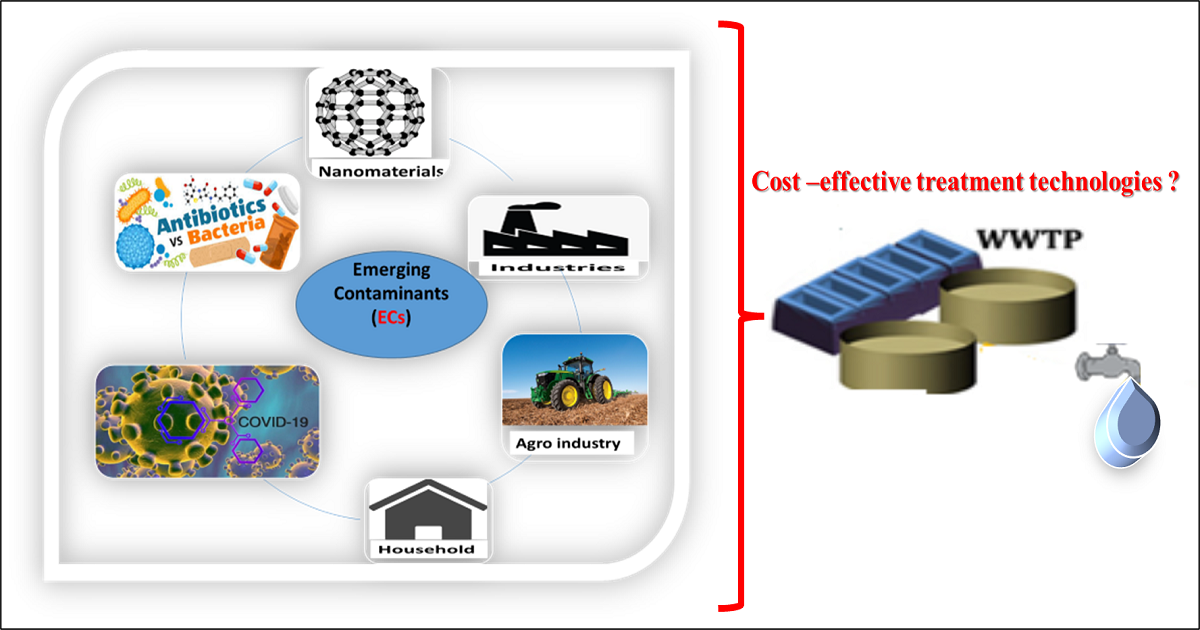Emerging Pollutants and Wastewater Treatment Technologies
A special issue of Applied Sciences (ISSN 2076-3417). This special issue belongs to the section "Environmental Sciences".
Deadline for manuscript submissions: closed (20 April 2024) | Viewed by 2462

Special Issue Editors
Interests: water and wastewater treatment technology; biophotocatalysis; membrane technology; bioenergy; process optimization; response surface methodology; green engineering; green catalysis; nanotechnology and magnetic separation technology
Special Issues, Collections and Topics in MDPI journals
Interests: water and wastewater treatment technologies; green engineering; membrane technology; process optimization; advanced oxidation process; nanotechnology; magnetic separation process
Special Issues, Collections and Topics in MDPI journals
Special Issue Information
Dear Colleagues,
Anthropogenic activities and industrialisation makes the treatment of water pollution very fundamental in environmental sustainability. In fact, emerging contaminants (ECs), such as pharmaceuticals, antibiotics, pesticides, oil emulsion, phenols, and dye, are highly recalcitrant pollutants which undermine the efficacy of conventional treatment technologies. Consequently, advancing technologies to monitor and mitigate ECs is highly advantageous as they pose a great threat to human health and the environment. Herein, the reclamation of wastewater for reuse can be a viable route to water sustainability. Generally, to meet stringent wastewater discharge specifications, significant efforts made in addressing and managing waste and water pollution still encounter difficulty. This warrants an urgent demand for developing robust technologies and the concept of treating wastewater towards a circular economy.
Therefore, this Special Issue will present new ideas and experimental results in the field of water and wastewater treatment technologies and other related disciplines. Areas relevant to bioenergy and wastewater management may be included, as they are not limited to kinetics and the process optimisation of anaerobic digestion, advanced oxidation, bioremediation, adsorption, coagulation, nanotechnology, bioprocessing, bioengineering, life cycle assessment, and environmental protection solutions.
Dr. Emmanuel Kweinor Tetteh
Prof. Dr. Sudesh Rathilal
Prof. Dr. Isaac Dennis Amoah
Guest Editors
Manuscript Submission Information
Manuscripts should be submitted online at www.mdpi.com by registering and logging in to this website. Once you are registered, click here to go to the submission form. Manuscripts can be submitted until the deadline. All submissions that pass pre-check are peer-reviewed. Accepted papers will be published continuously in the journal (as soon as accepted) and will be listed together on the special issue website. Research articles, review articles as well as short communications are invited. For planned papers, a title and short abstract (about 100 words) can be sent to the Editorial Office for announcement on this website.
Submitted manuscripts should not have been published previously, nor be under consideration for publication elsewhere (except conference proceedings papers). All manuscripts are thoroughly refereed through a single-blind peer-review process. A guide for authors and other relevant information for submission of manuscripts is available on the Instructions for Authors page. Applied Sciences is an international peer-reviewed open access semimonthly journal published by MDPI.
Please visit the Instructions for Authors page before submitting a manuscript. The Article Processing Charge (APC) for publication in this open access journal is 2400 CHF (Swiss Francs). Submitted papers should be well formatted and use good English. Authors may use MDPI's English editing service prior to publication or during author revisions.
Keywords
- advanced oxidation process
- bioengineering
- biotechnology
- coagulation
- emerging contaminants
- nanotechnology
- bioenergy
- photocatalytic engineering







